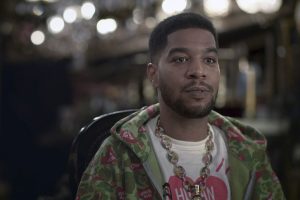Reinventing the Old for a New Audience: “The Artist”
January 25, 2012
At a time when the box office is filled with book adaptations or remakes of old films, Director Michel Hazanavicius hearkened back to a different era of film for “The Artist.” Set during the 1920’s, “The Artist” is a silent black-and-white film. This does not seem like the typical draw for today’s audiences. Most are used to seeing bright colors and 3D and hearing constant music when people are not talking during movies. Despite this, Hazanavicius’s film received a critics’ rating of 97% and a viewers’ rating of 91% on the Rotten Tomatoes website. Even though it does draw inspiration from old films, “The Artist” presents the audience with an original concept. While it did not hit the top of the box office charts, it still did well, ranking in the top fifty films during the first month of its release. This popularity and reception can be seen in the fact that it does offer something completely different than every other film in theaters. Capitalizing on the fact that it is a silent film, the lead actor Jean Dujardin uses facial expressions and body language to communicate both with the audience and the other actors. One scene that captures this well is his playful dance competition with Berenice Bejo, the lead actress in the film. Bejo does an equally compelling performance in this scene, maximizing on the fact that only her lower body is visible. Their dance sequence that shortly follows captures their chemistry. The best scene, though, is between Dujardin and the dog. Trying to gain his wife’s attention, Dujardin’s character and his dog mimic each other’s movements. While both fail to gain the wife’s affection, the two bring smiles and laughs to the audience. Like current films, “The Artist” does use sound to punctuate certain moments to signify if a scene is light-hearted or filled with terror. Aside from this music, “The Artist” also uses sound two other times. Once is to capture the main character’s fear at the impending release and take over of the talkies. The audience finds him in a dream sequence where he is unable to make sound while everything and everyone else does. This scene does not just move the story forward, but also exhibits the terror many silent film actors had at the time that talkies emerged. The other moment is at the very end of the movie, revealing why Dujardin’s character was filled with such fear. Hazanavicius’s “The Artist” is an excellent film that really requires the audience to pay attention and read physical cues to follow the story. While the film follows the story of a star or silent films, it also makes one think about the current state of film. Can it perhaps be seen as a social commentary on how today’s films have become so reliant on music and dialogue to move the story? It definitely does make one realize how much can be told solely through action. As a side note: anyone truly interested in films should try to find “The Artist” at a theater that still screens films on 35mm. It is amazing to hear the film rolling during the movie.







